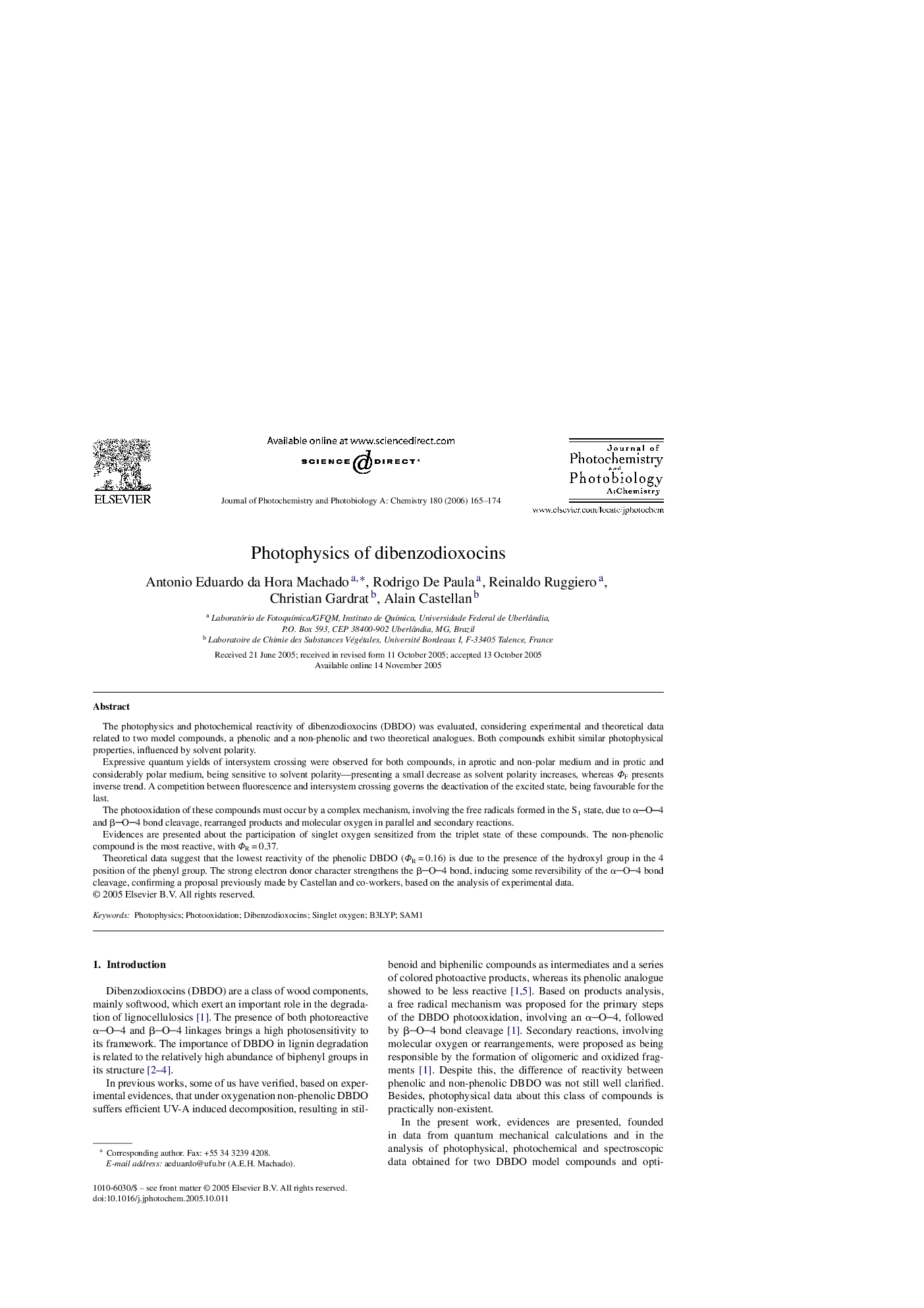| Article ID | Journal | Published Year | Pages | File Type |
|---|---|---|---|---|
| 28626 | Journal of Photochemistry and Photobiology A: Chemistry | 2006 | 10 Pages |
The photophysics and photochemical reactivity of dibenzodioxocins (DBDO) was evaluated, considering experimental and theoretical data related to two model compounds, a phenolic and a non-phenolic and two theoretical analogues. Both compounds exhibit similar photophysical properties, influenced by solvent polarity.Expressive quantum yields of intersystem crossing were observed for both compounds, in aprotic and non-polar medium and in protic and considerably polar medium, being sensitive to solvent polarity—presenting a small decrease as solvent polarity increases, whereas ΦF presents inverse trend. A competition between fluorescence and intersystem crossing governs the deactivation of the excited state, being favourable for the last.The photooxidation of these compounds must occur by a complex mechanism, involving the free radicals formed in the S1 state, due to αO4 and βO4 bond cleavage, rearranged products and molecular oxygen in parallel and secondary reactions.Evidences are presented about the participation of singlet oxygen sensitized from the triplet state of these compounds. The non-phenolic compound is the most reactive, with ΦR = 0.37.Theoretical data suggest that the lowest reactivity of the phenolic DBDO (ΦR = 0.16) is due to the presence of the hydroxyl group in the 4 position of the phenyl group. The strong electron donor character strengthens the βO4 bond, inducing some reversibility of the αO4 bond cleavage, confirming a proposal previously made by Castellan and co-workers, based on the analysis of experimental data.
